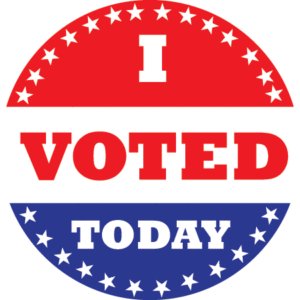How are we, in 2014, not past the days of voter discrimination based on race or gender?
Today, voting rights are still challenged by right-wing voter suppression tactics designed to restrict the participation of voters whose support would likely favor the anti-Citizens United, pro-woman and pro-labor agenda.
The NOW Foundation recently published an issue advisory regarding the serious challenge of voter suppression in today’s society, and the effect of these tactics on the upcoming election.
Voter suppression in the U.S. typically takes the form of laws that exist to reduce voter turnout; either to prevent potential voters from attending the polls or to bar eligible voters from voting when they arrive.
These laws are particularly detrimental to participation among a collection of voters identified as the Rising American Electorate (RAE). Made up of young people aged 18-29, unmarried women, African Americans, and Latinos, this group is particularly crucial to election outcomes because its population is consistently growing in size and tends to vote for more progressive candidates, which is vital as we strive to save the Senate.
Voter turnout has been low in recent years with only 36.9 percent of voters participating in the last midterm election (2010). This year’s midterm elections are fast approaching and these laws discourage the RAE from voting when we need them most.
Many of these laws require that every voter present a government-issued photo ID in order to vote at the polls. This may seem feasible for most people, but many eligible voters encounter challenges in acquiring the proper form of ID for financial reasons or accessibility issues. Overall, 11 percent of voters do not have a government-issued ID, and minority voters face even higher numbers. Eighteen percent of voters over the age of 65 do not have the proper IDs, and 25 percent of black voters are without government-issued IDs. Thus, the potential impact on minority and elderly populations is staggering.
Voter suppression laws are a source of oppression for women, as well. The verification process inherent in the voter ID laws significantly affects women who change their names after marriage. Ninety percent of women adopt their husband’s names after marriage, and many others choose to hyphenate their names, both of which can create difficulties in changing names on official documents and can therefore hinder their participation on Election Day.
As if the requirement of a government ID has not created enough obstacles for eligible voters, the reduction of early voting days is another key tactic used to prevent targeted groups of voters from reaching the polls.
This may seem like a trivial rule to many. However, massive lines that discourage voters from participating at the polls have become a discriminating consequence of these laws. The most famous case was seen in Florida where more than 200,000 voters left the polls without voting and 49,000 people did not even attempt to vote when they heard about the long lines.
Perhaps the most frustrating detail about voter restrictions, and there are many, is that the “voter fraud” that the right-wing is supposedly combatting with the implementation of these laws is extremely rare. In 2012, there were merely 10 cases of voting fraud out of the 118 million people who voted. This serves as more evidence that these laws are politically driven strategies to impede RAE voters.
Regardless of race, gender, age, or political party, voting is a democratic human right guaranteed to the people of the U.S. in the nation’s founding documents and these laws clearly threaten that right.